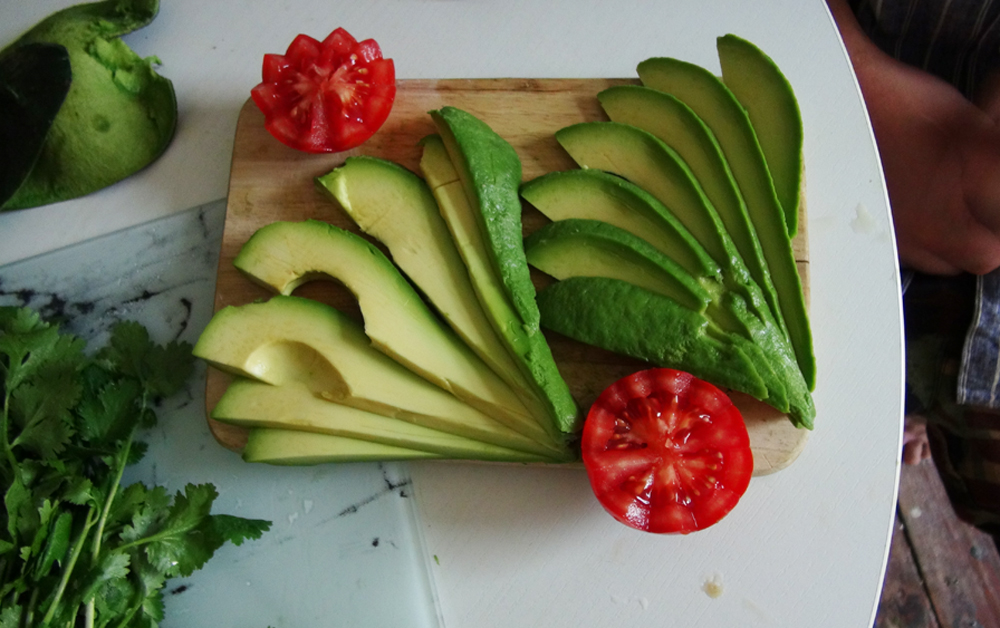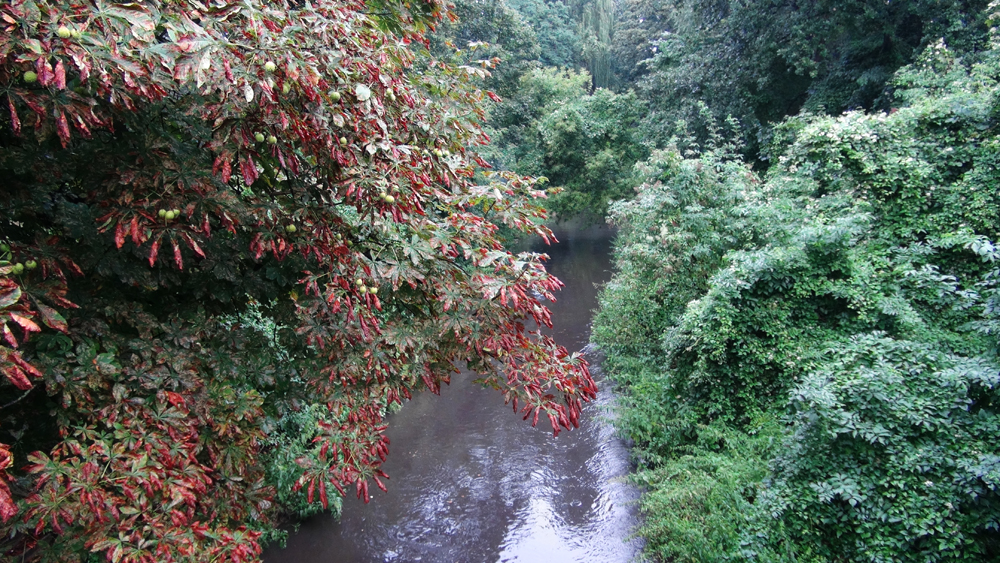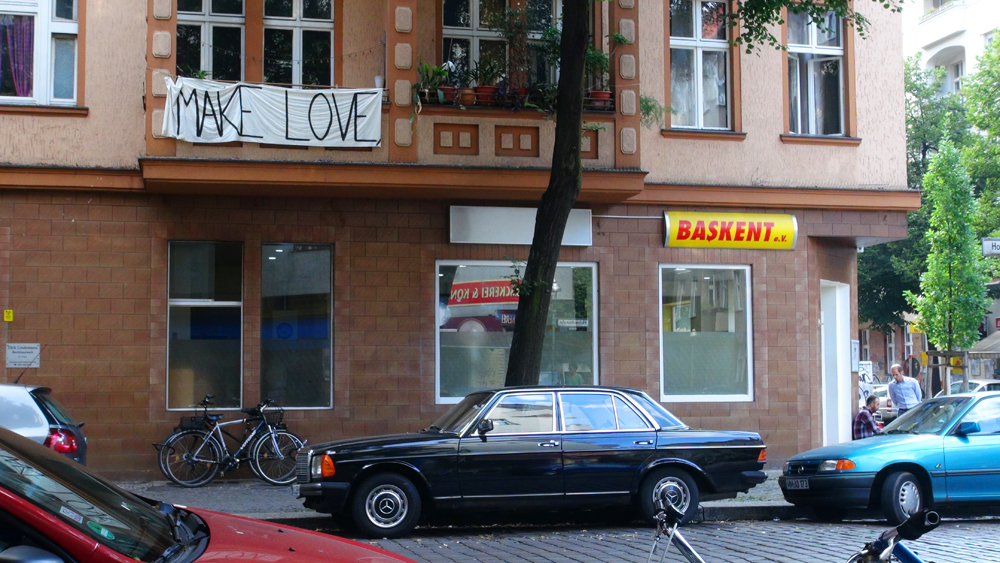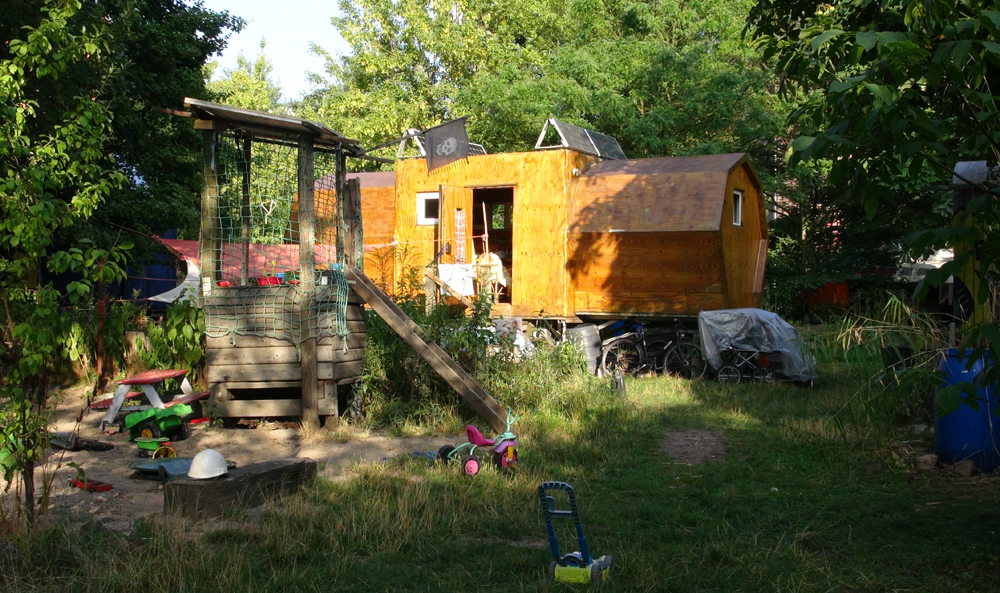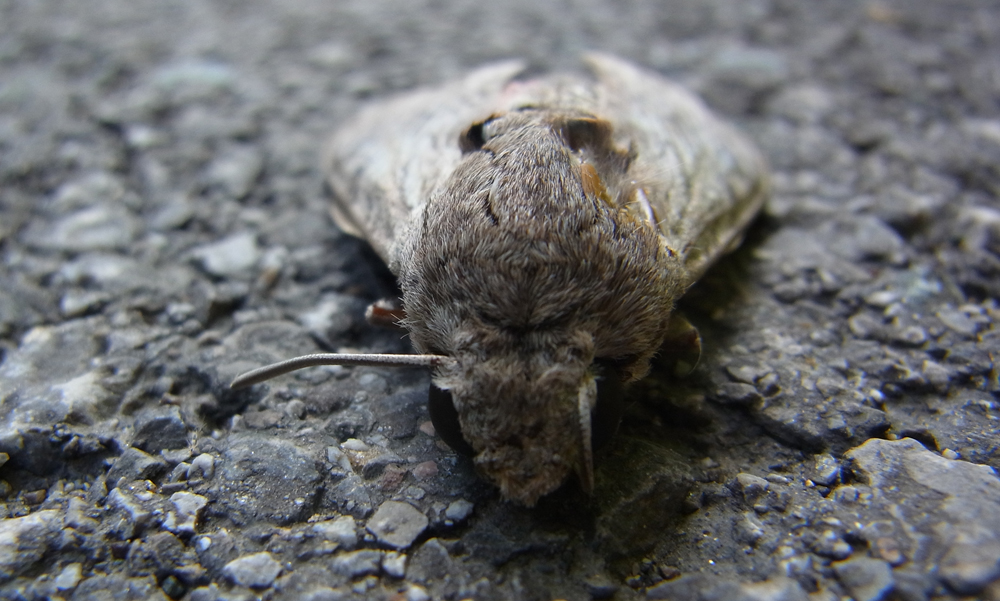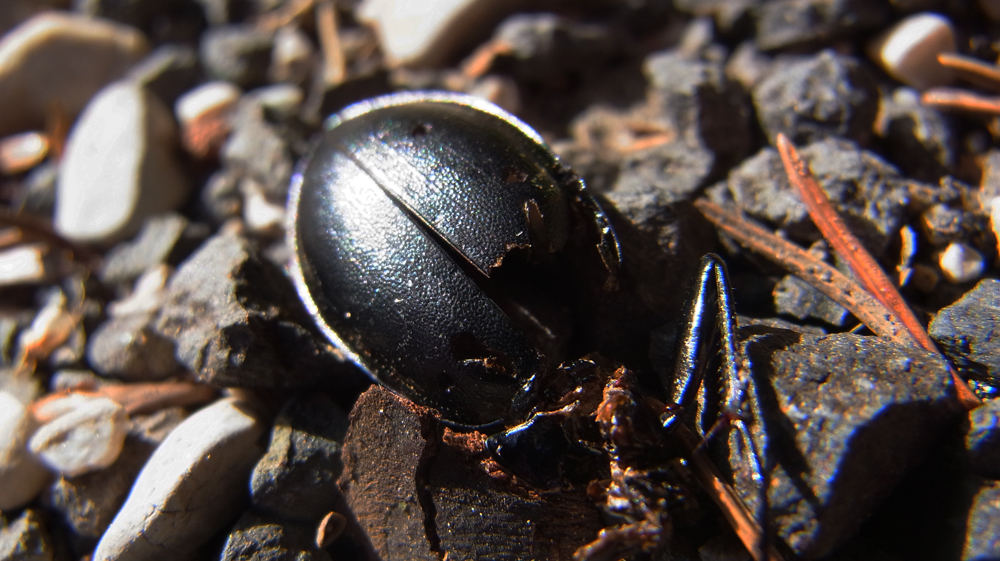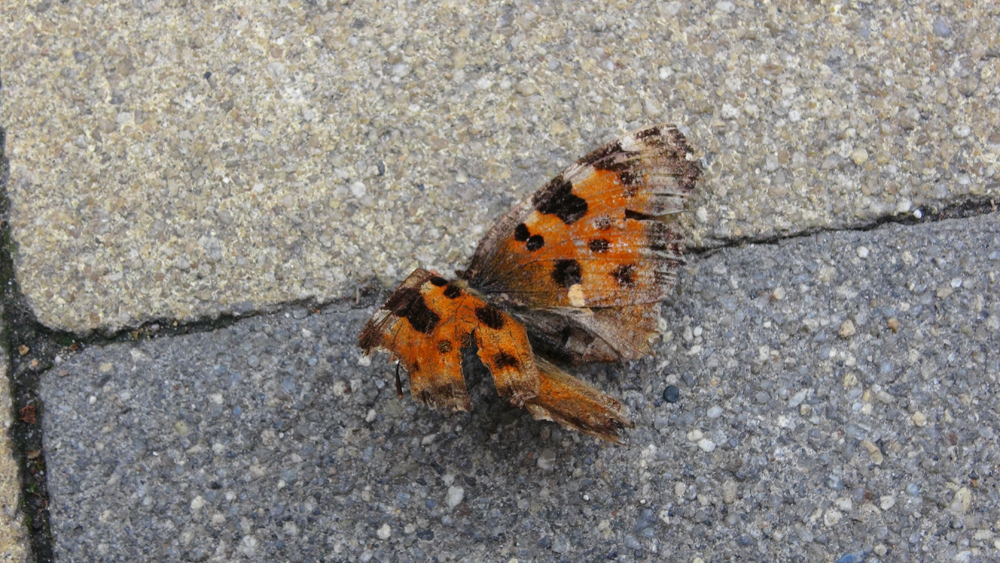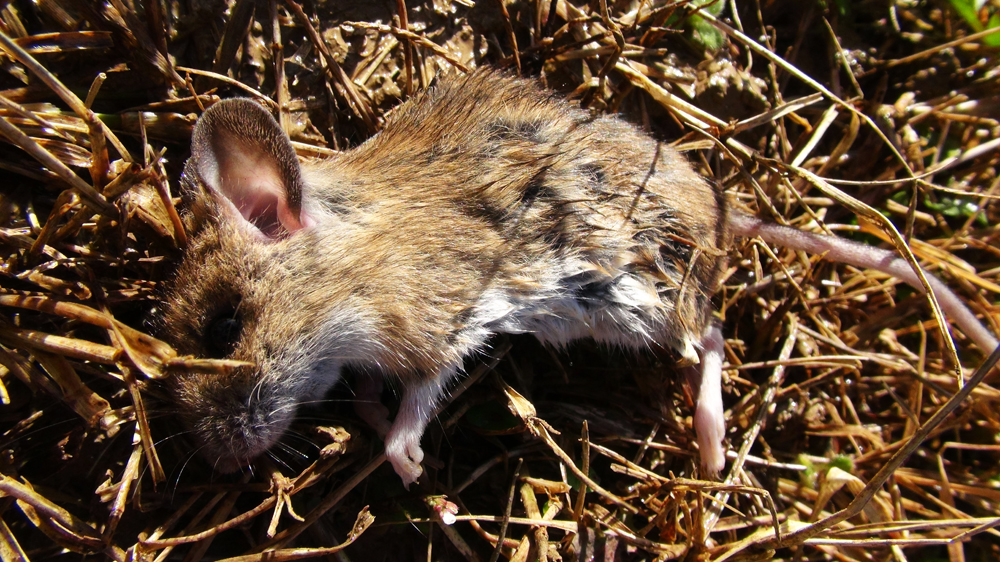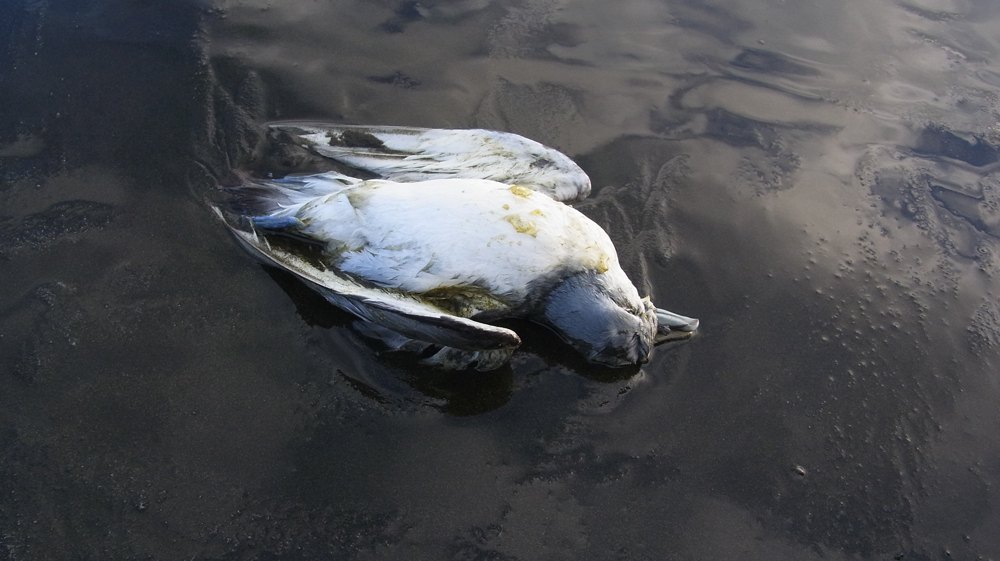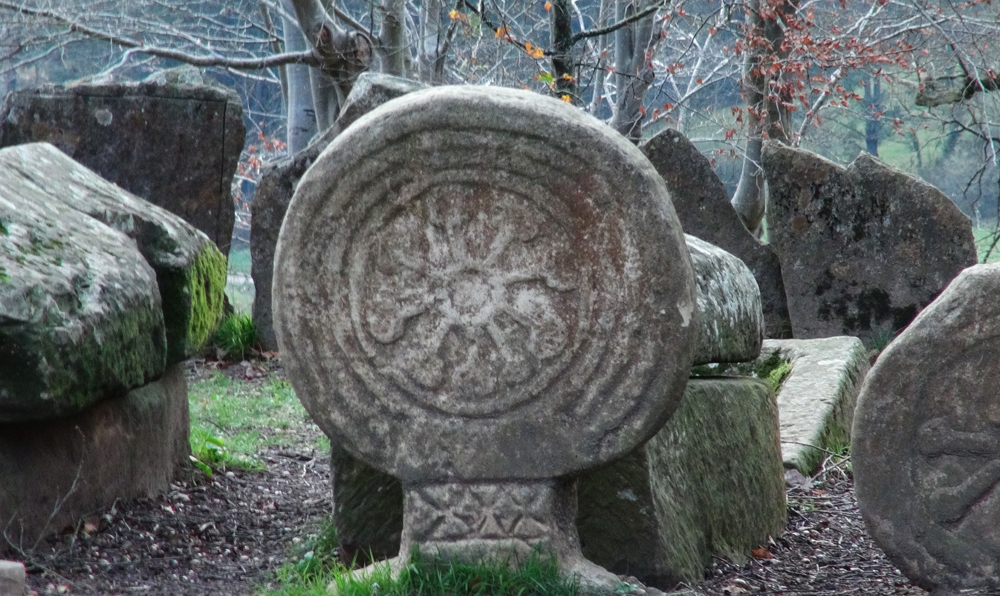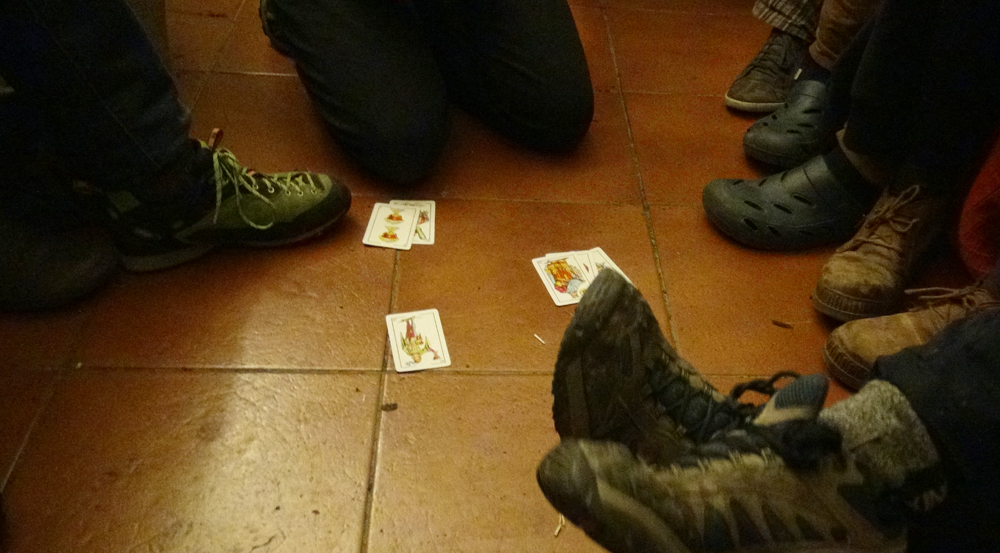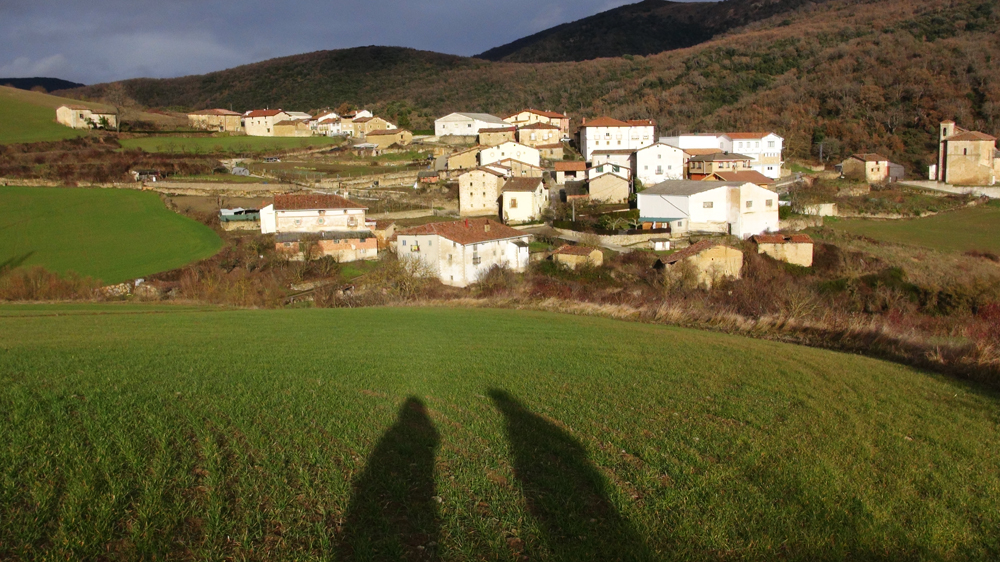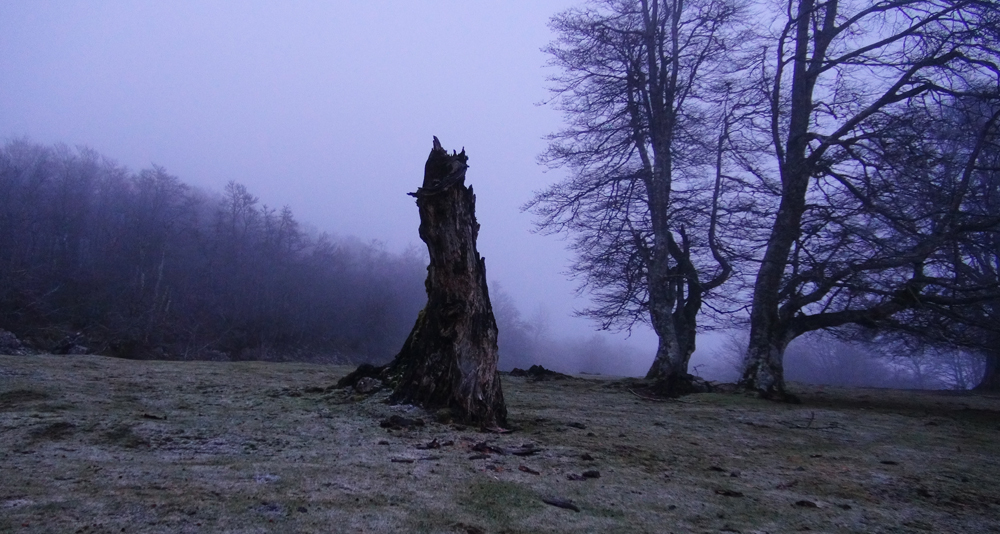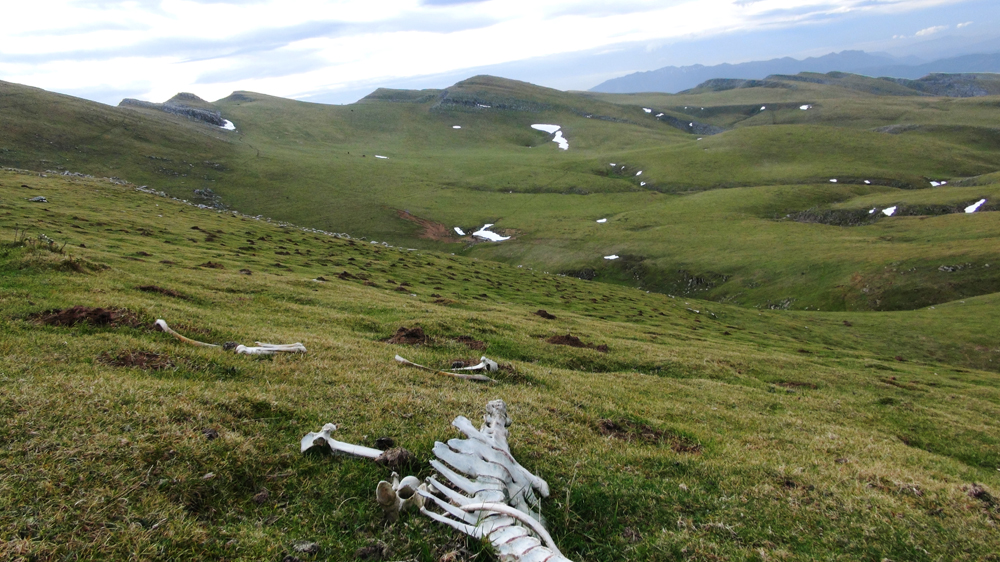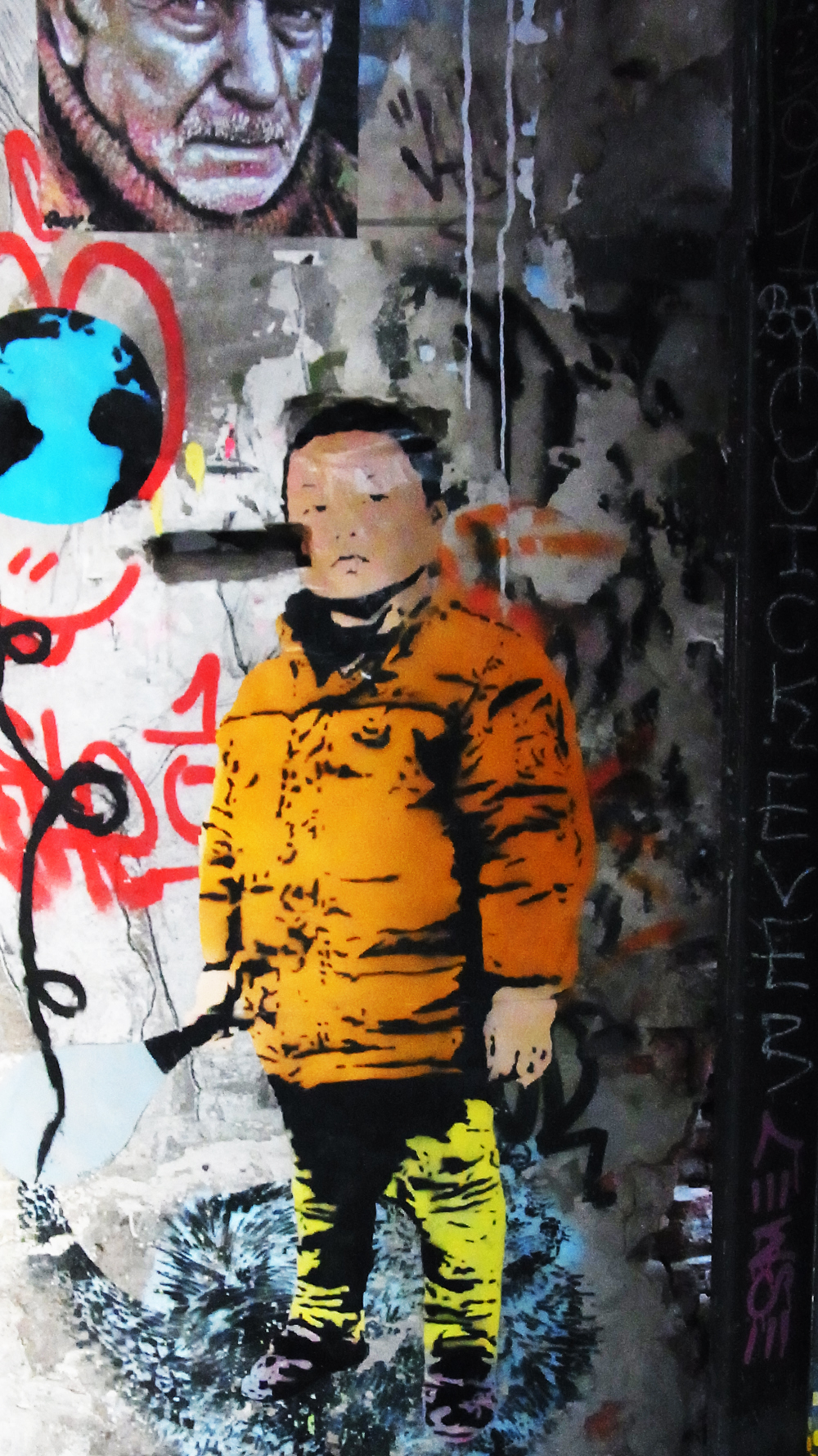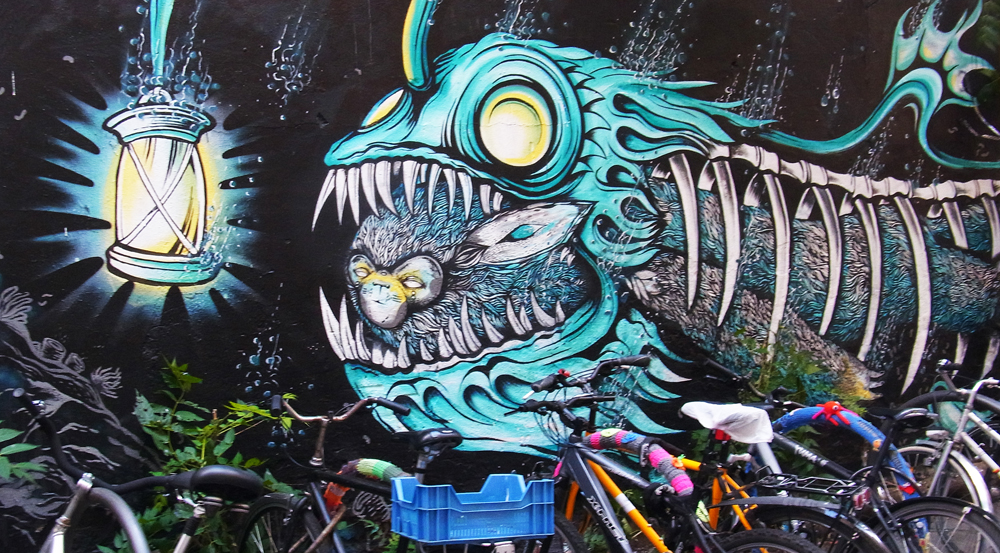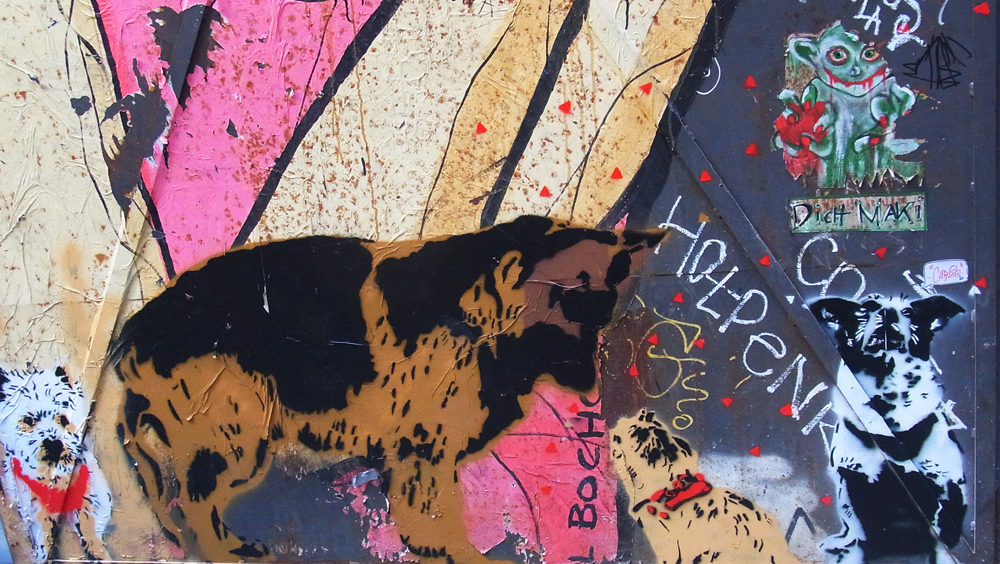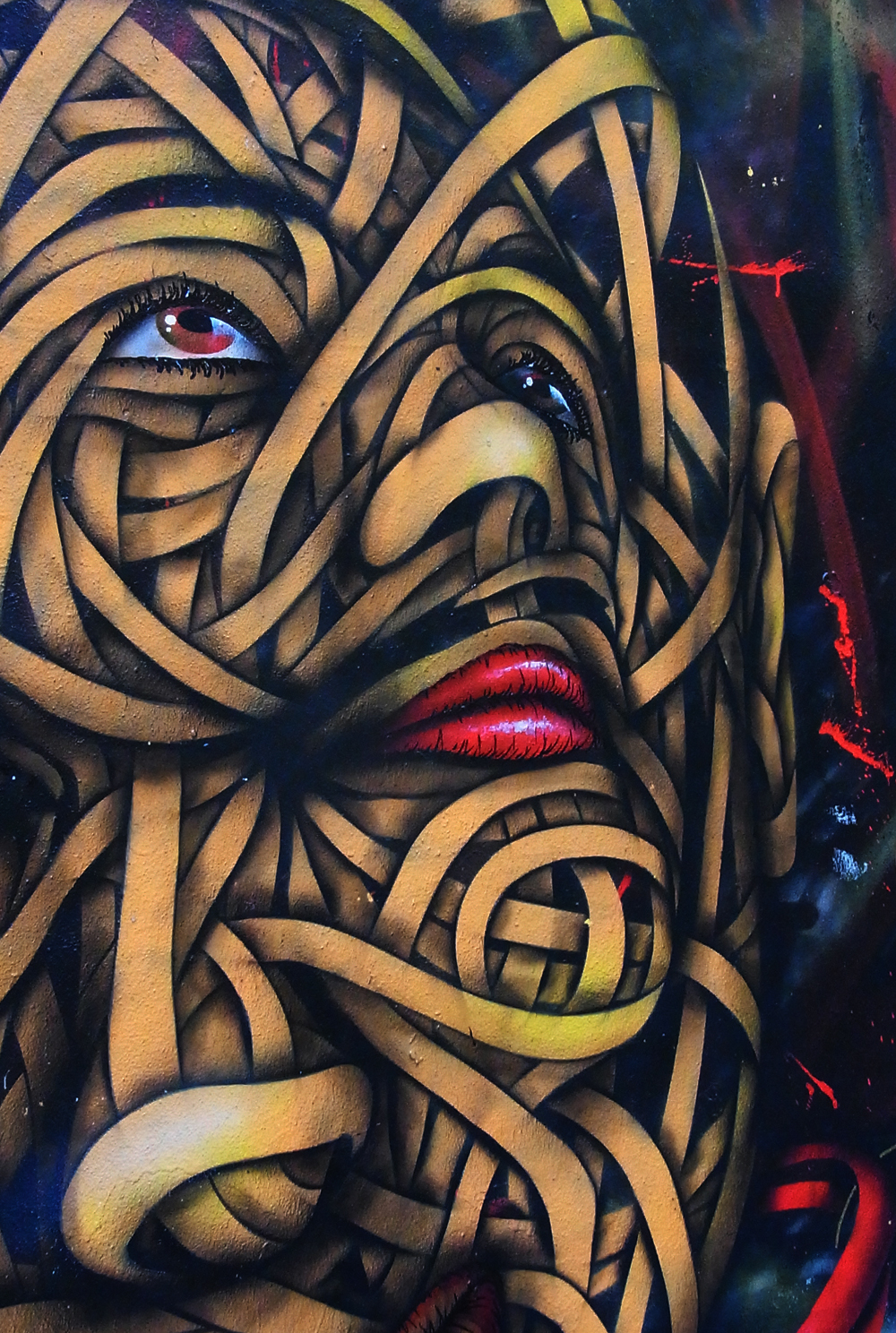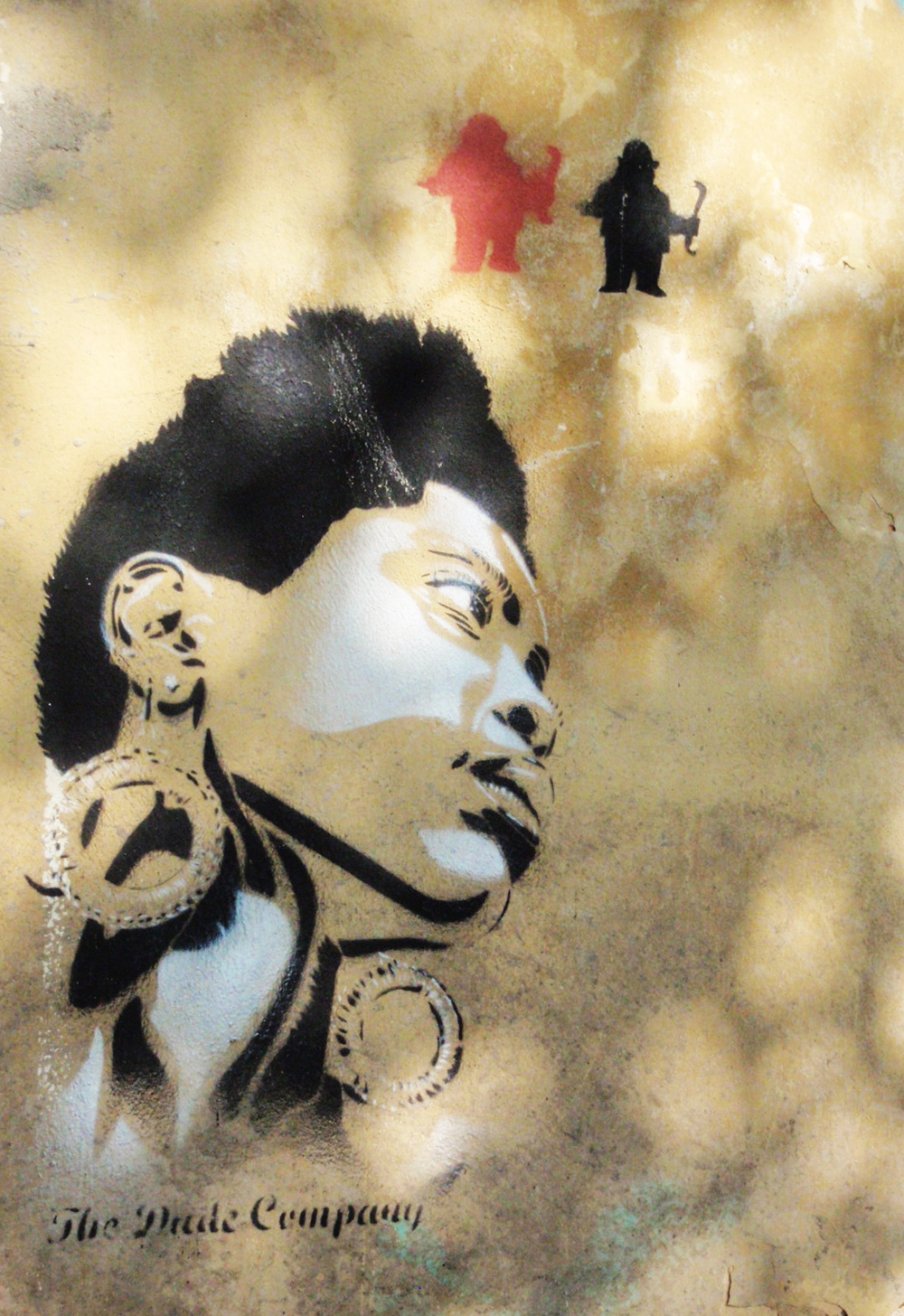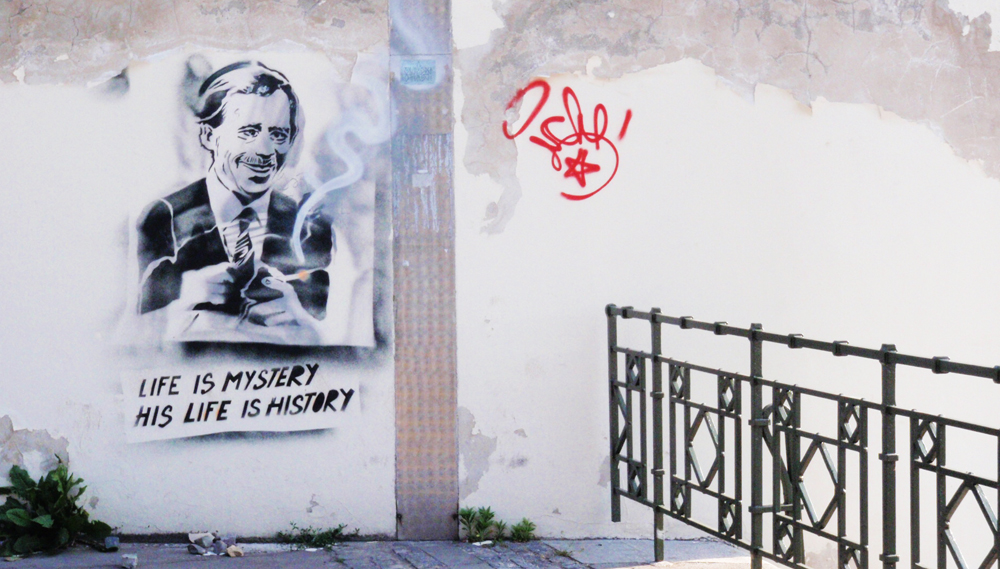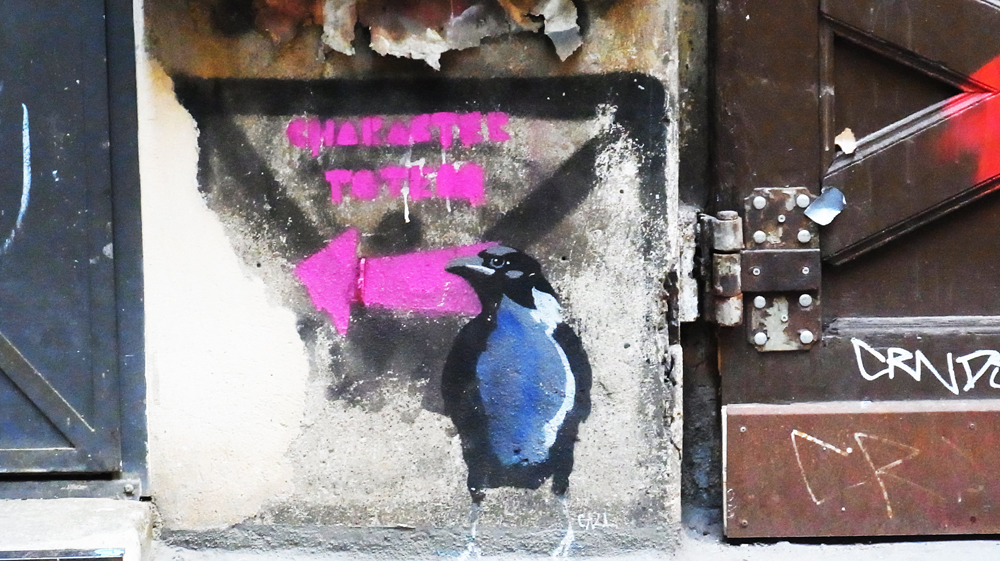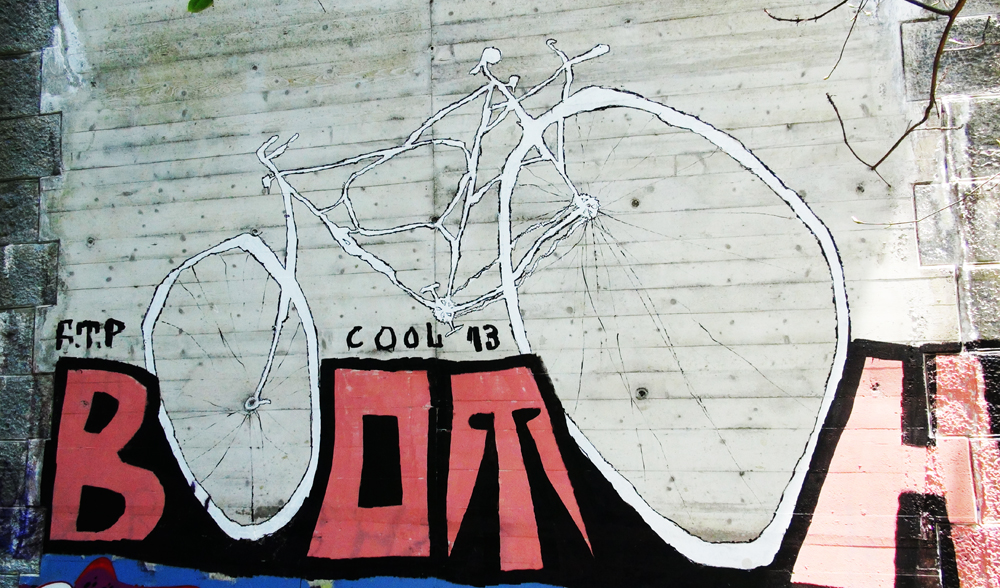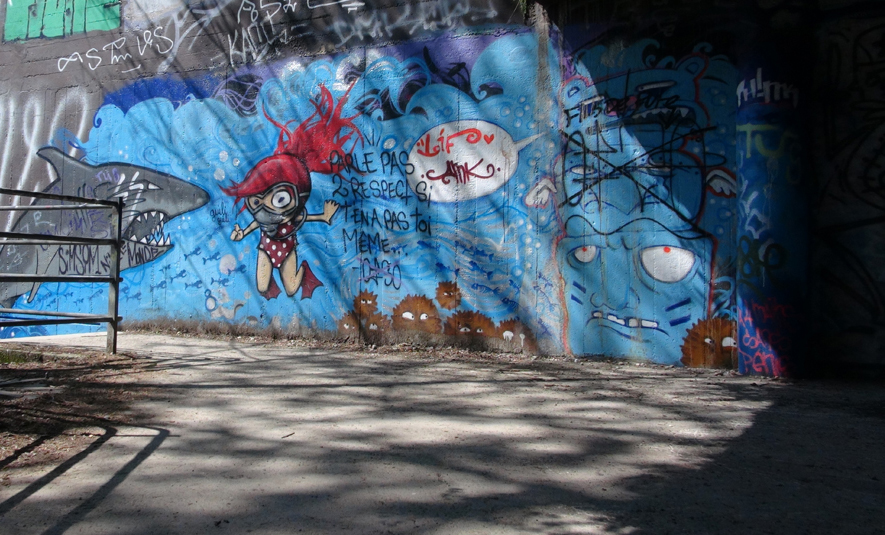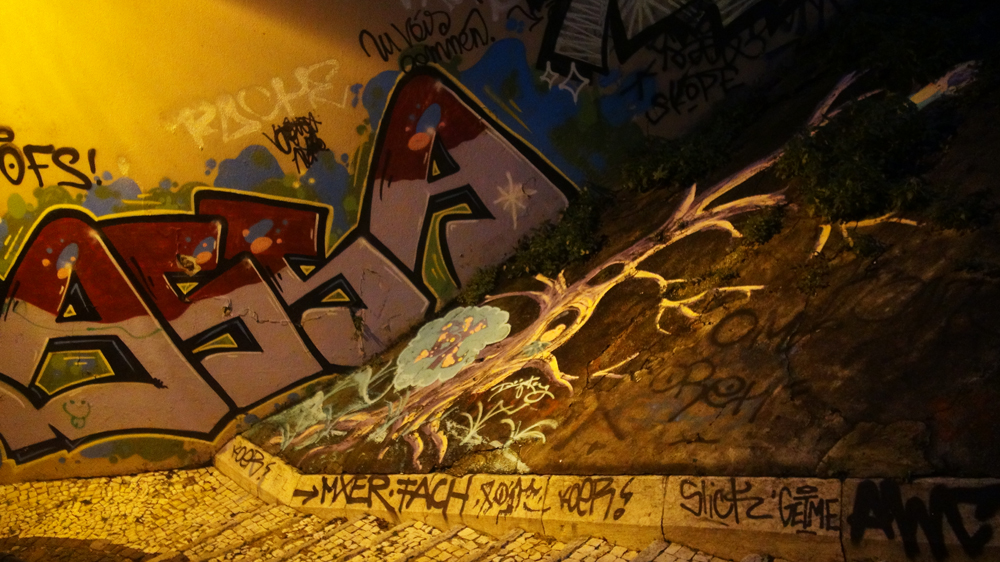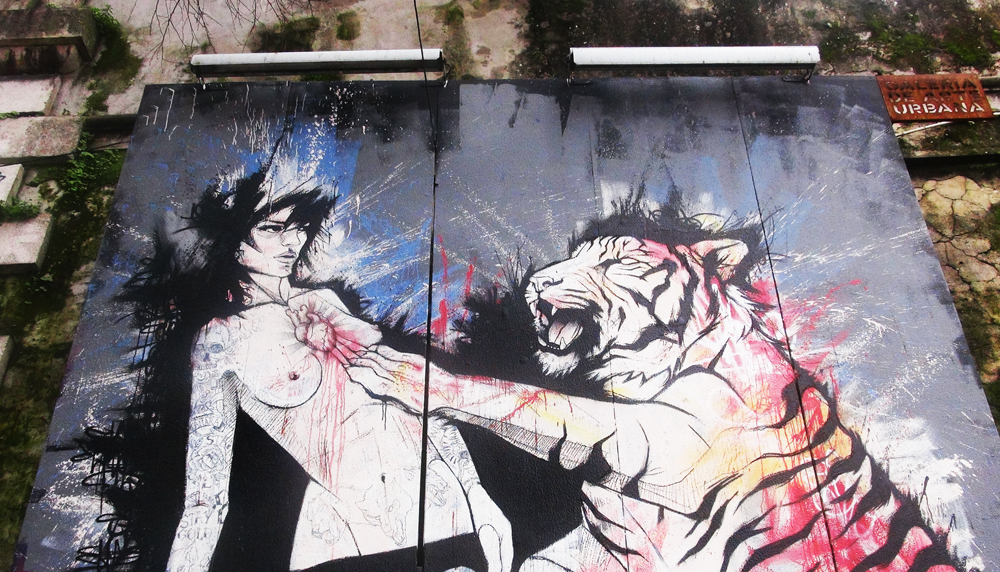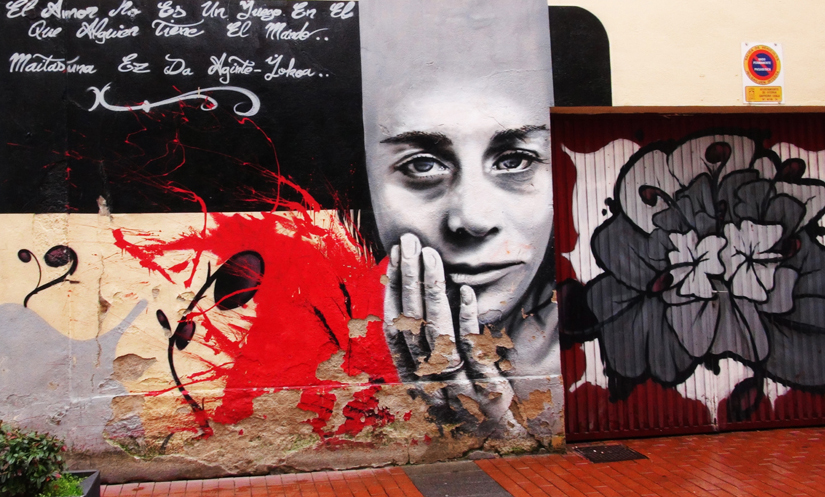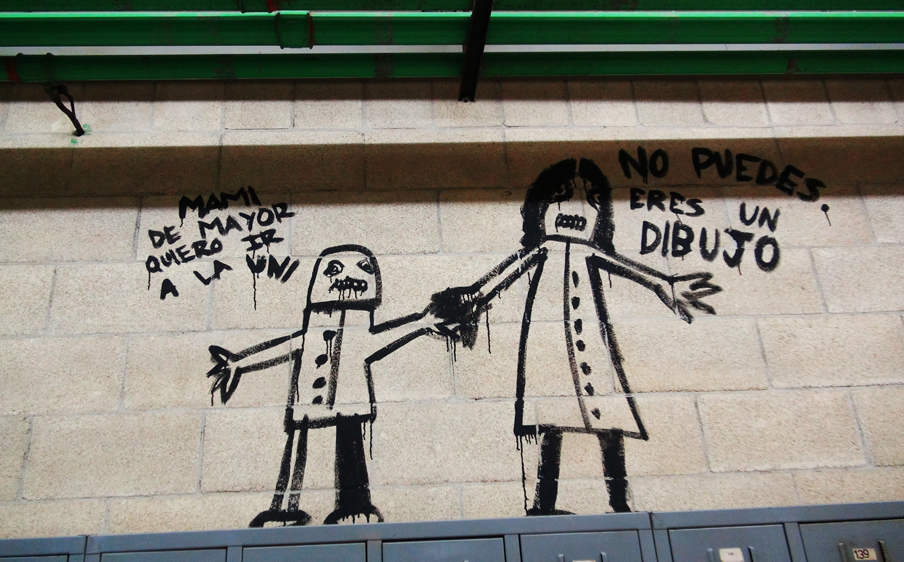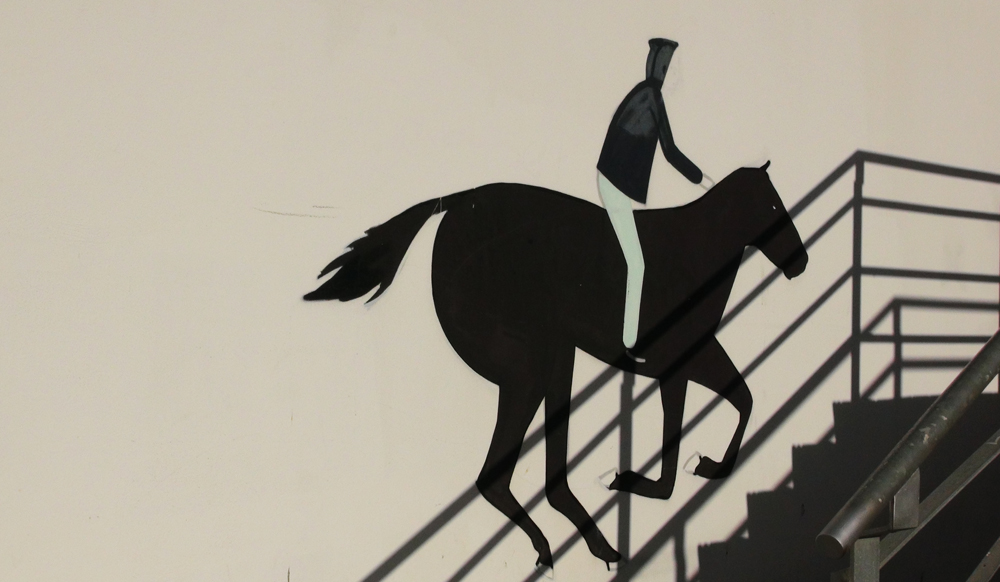Day one: Thirst
Leaving the safety of our two guides behind us, we (mum, Daniela and myself) shouldering our heavy packs (weighed down with un-necessarily vast amounts of food) set off along the winding road into the mountains. To our left scree and lichen spattered rock, rose sharply, while to our right a forest of pine and beach shaded the banks of the Rio Veral and the sun hot summer blazed down on us.
Eventually we reached the end of the road and began to climb, the path became rocky and treacherous and the stones had a red ocher color, as if stained by iron. Lizards scurried out of our way. And the line of gray mountains like jagged teeth drew around us. I began to sweat profusely. Sweat dripped of my nose, splashing on the ground. Sweat filled my eyes making them sting. Sweat drenched my clothes till theywere sopping. I was overcome by a powerful thirst.
At length we reached the first landmark on our map, a hat, no more than a broken, burned out stone ruin. Here we stopped for lunch, a hearty meal of chorizo (sausage to my mind no other can compete with the rich fatty flavor of true Spanish chorizo, which is cooked and eaten hot ), baguettes, cucumber and wine. It was a meal that shocked other hikers whose fare was mostly limited to water and dehydrated foods.
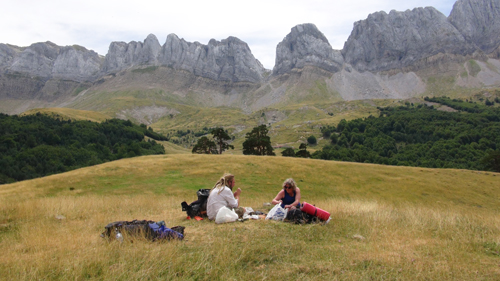
After lunch we kept climbing. My thirst had not abated but with every step it seemed to grow worse and my mouth felt unquenchably dry. It was around this time that Daniela began to question whether I was drinking all the water supplies, and only being half way through the first day, whether it what wise. I had already drunk two out of our five bottles, we were now high in the mountains and there was no tap marked on our map.
We passed the tree line and walked through a beautiful landscape of alpine flowers, small birds, grasses, lizards and bees. Soon however this landscape gave way to more rock and wind swept grass. Fatigue began to set in on our soft pink bodies. Our huge packs cut into our shoulders our rests became longer and more frequent, while the path became ever steeper and more treacherous. My breath came out in loud gasps and my was mouth dry as I begged the others for more of their precious water.
Meanwhile vultures and ravens circled ominously, as we walked the narrow ledge like paths around the steep precipices. Daniela what the fittest, lithe as a mountain goat, she led the charge, followed by my panting self. But poor mum, poor little Huhu was dropping behind; the steep up hills were taking their toll on her and she was lagging further and further behind (though she was very tough sleeping without a tent and being rained on more than once).
We came to the second hut a tin shed on a kind of small plateau. Exhausted though we were, we all agreed that there was something unpleasant in the bleak prickly landscape, infested with scurrying marmots (thesis large cat-like ground squirrels, active for only three months of the year, are everywhere in the Pyrenees) that we did not want to make camp but decided to push on.
And so we did, toward a high saddle between the two peaks, hoping to make it before the yellow sun rolled over the western mountains toward the dark and deep Atlantic. My mouth had become so dry that I began to chew on leaves and sticks with the goal of salivating and thus bringing more liquid to my mouth.
We reached the high saddle just as the first shafts of evening were beginning to illuminate the mountains in a rose light. We were rewarded for our trouble with a spectacular view of the valleys and sharp gray mountains before us. Herds of chamois gamboled through the grassy land. The rare white vultures that the Spanish call Alimoche circled in the darkening sky.
It was here we took a seemingly clear trail leading to our left. The path however petted out, and when we reached the soft alpine meadows we were lost in the ailing light. We were rescued by a camping school group, who pointed us in the direction of the right path. Here, clear springs bubbled out of the mountainside and we filled our water container with the fresh water. We drank deeply. We camped on a soft, grassy terrace. We ate our hot food, while we watched the twilight play on the faces of the mountain cliffs to the sound of the wind and the distant bells of the Pyrenean feral horses. The night was clear the stars were bright.
Day Two: The Valley of Horses
Early next morning we woke and had a breakfast of muesli and milk powder and discovered that where we had slept were old stone ruins, so old, that all that what was left was the grass covered outline of what could have been a house and a small circular structure. Perhaps they were the dwellings of medieval shepherds, or buildings from even earlier, structures of the ancient Cro-Magnon peoples, the ancestors of the Basques that lived here before even the Celtic speaking peoples came out of the east, and who left only weathered dolmans and cave paintings behind. Or Perhaps, as Basque legend tells, they were the Jentilak, the benevolent hairy giants of old who never moved from the mountains and who disappeared beneath the earth when a star foretold the birth of Christ.
Our bottles filled with fresh water, we had an easy enjoyable hike down the valley to the river below. Insects buzzed, butterflies flitted, and brooks bubbled. At length we began to come close to a river, a tributary of the Rio Aragon, and we wove our way through fields of bracken fern. We had lunch at a bend in the river where we took a cooling dip, sharing the swimming hole with baby frogs while the mother frog sat mummified on the rock in the hot sun. After lunch we followed a long stretch of dusty, dirt road. Wind writhen beach forest to our right, and the bending line of the river, glinting in the hot afternoon sun, to our left. As the cool of evening was beginning to replace the heat of the day we reached the end of the road and climbed steeply clambering over rocks for about on hour until we came, just as the light what dimming, and our bodies were beginning to break, into the Valley of Horses.
The Valley of Horses is a long tear of flat grassy land broken by a sluggish curl of water. Spread across this alpine plain were hundreds of horses and cattle. The horses and cattle of the Pyrenees are not technically wild. They have bells, so that the herdsmen may track them through the mountains (and many of them, horse and cow, will end up in a sausage). On the other hand the horses and cattle of the Pyrenees can not exactly be called tame. They wander whither they want, without fence or gate to check them. They breed As they wish, without the control of men. And in summer they run across the mountain ridges, their manes and tails blowing in the chill wind.
I must admit that I have a fear of large animals, horses, and cattle particularly, and there they were in the failing light, the vast herds spread across the plain while the ringing of the bells echoed in the hills. We had to walk through them and it was getting late. We were exhausted. But they did not bother us and we camped with another hiker on the edge of the Valley of Horses. It was, we realised not the cattle that are the worry, but the horses. The cattle are placid enough, but the horses are curious of people, They run in herds, they meet other herds, they kick and fight. We fell asleep and woke to the sound of bells, the deep mooing of the cattle, the whinnying of the horses and the thunder of their hooves. That night in the Valley of Horses, I faced my fears.
Day Three: The Field of Blueberries
The next morning dawned. And mist began to roll thick and fast through the hills. You could see it racing into the valley – a dense white cloud.
And soon we began our hike for the day. Keeping tight so we would not get lost amongst the dense damp fog, like the hobbits in the barrow downs, or run into some savage bull, for we heard amongst the mist, always, ringing bells. We climbed and climbed and as morning gave way to late morning the mist cleared. And we arrived at a popular high alpine lake, close to the boarder with France.
Here, both French and Spanish tourists congregated to observe the phenomenon of this glacial lake. I personally did not get a pleasant feeling from it. The rocks were sharp and red, strange large fish circled within, and it was filled with an unpleasant kind of weed. Nonetheless we went for a swim and it what refreshing enough. We filled our water bottles at a nearby spring and continued our journey.
Blocking our path eastward were a pair of young bulls attempting to mate with the cows on the path itself; carefully we went around. We ate lunch in a stunted mossy beech grove and then took a wrong turn that nearly took us to the French boarder. But once we corrected our path we entered into what was probably the most beautiful part of the journey. First we walked through steep alpine meadows. Sheep grazed and the large rocks, which covered the landscape, appeared as if they had been placed there by the Jentilak. We left these steep meadows behind and came to the eaves of an ancient beech forest. The forest with its moss-clad splendor had a kind of magical feeling, and though my feet throbbed with pain, there was something revitalising about the very trees themselves, which seemed to give me the energy to keep going. We tracked along the steep mountain cliffs and came to a waterfall splashing off the mountainside. We reached slopes of scree and shingle, where shallow rooted mountain flowers and herbs bloomed – irises, buttery word, and lilies, raspberries, crocuses, and red currants. Eventually our weary feet took us away from the open cliff faces and ancient moss-filled beech forests and into fields full of wild blueberries and here we threw off our packs and made camp.
Day Four: Return to Civilization.
The next day brought us out of the wilderness and to the ski resort town of Candanchu. How people can build something so ugly in a place so beautiful almost beggars belief. Candanchu can only be described as a horrible eyesore on the landscape, on offense against good taste and to the mountains themselves! A large stretch of concrete, bordered by the razor wire fences of a military base welcome the wanderer coming from the GR11. The town itself consists of large block like hotels and expensive pubs that resemble prisons. Coming from our camp among the fields of blueberries this town was a reminder of the world outside, the imposing structures of the Spanish government, who since Franco’s time have been suspicious of the mountains on their northern border.
We drank some beer in this history-less place and hurried on our path south. Following the line of a major road and the Aragon River, we walked through pine forest and dry scrubland. We passed old bunkers, leftovers from the civil war, and hill top castles built at the time when the Moors themselves came this far north. Into the lower-lands we went, following the route of the old pilgrimage to Santiago. We passed through the towns and villages. And as the altitude fell the country became lusher.
We passed through a lost world of ancient stone terraces and buildings, crumbling and reclaimed by the forest. We made camp by the river and built a fire. We had left the mountains. We felt sad, bereaved as if we had lost a friend, a cheerful bubbly friend that had led us though the mountains.
Thunder rolled through the mountains and rain lashed down on our camp. The next day we would cross the bridge of Pilgrims through the narrow ancient stone streets of Canfrank, and on, through Villanua to the dry dusty plains and canyons of Arargon, a bleak, infertile and eroded land, and on to the green valleys of Basque country where our journey had begun.
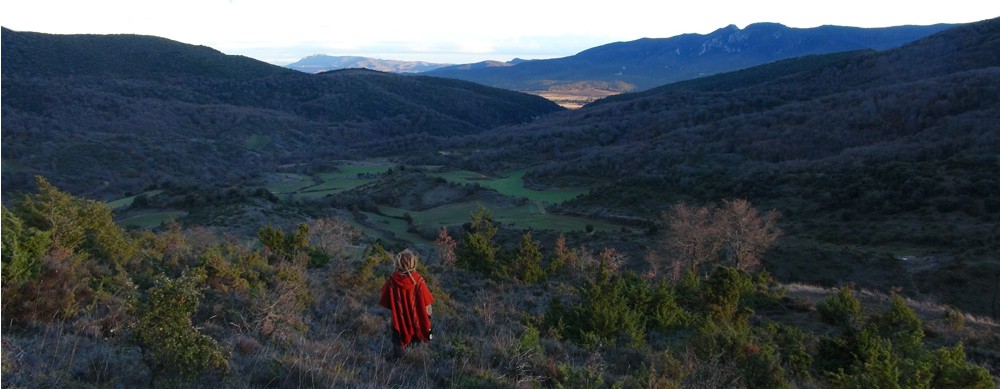
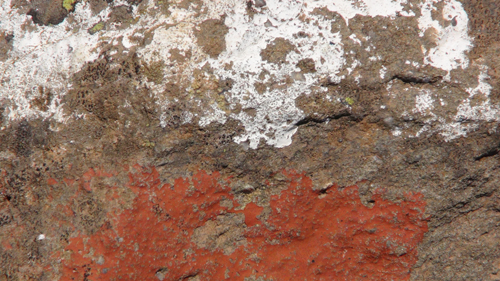
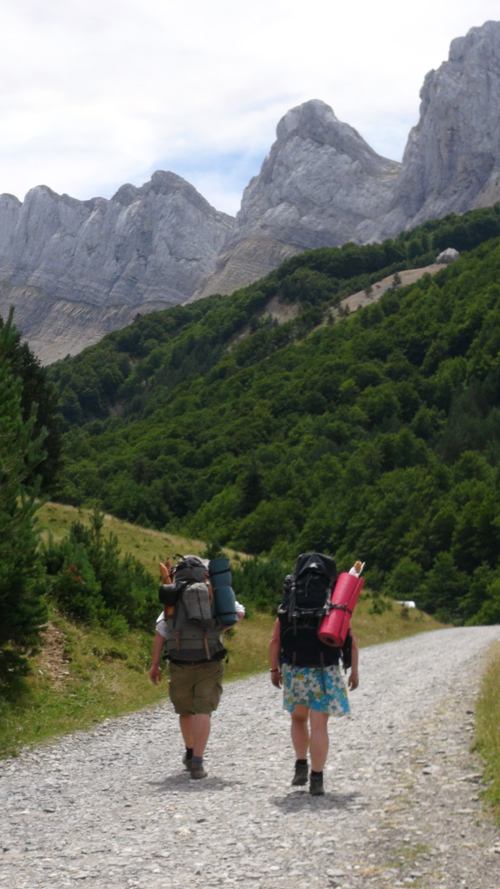

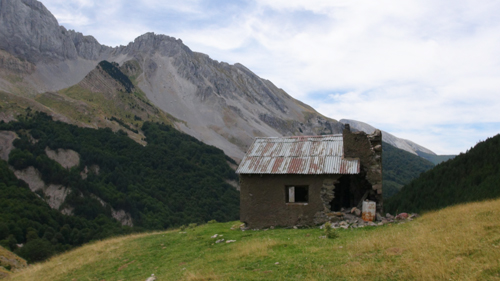
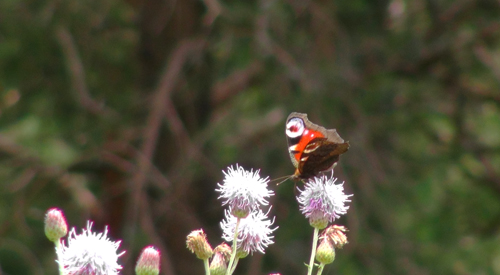
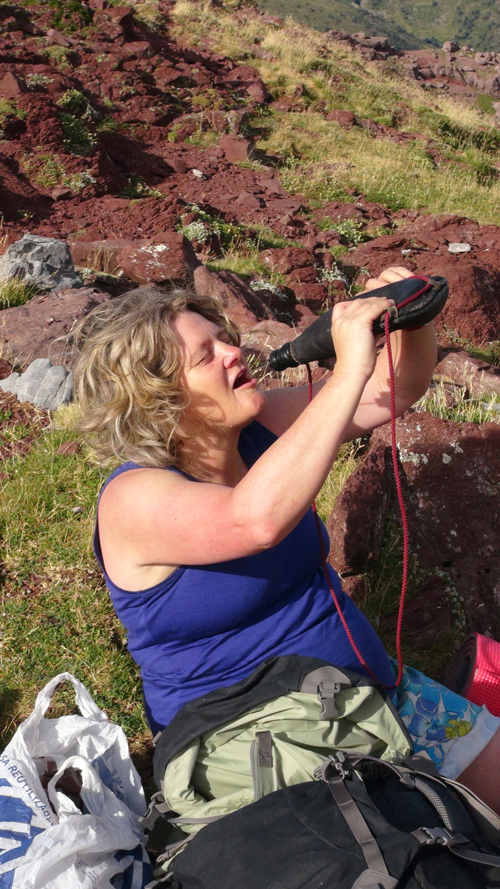
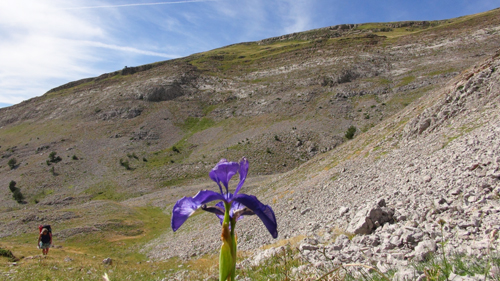
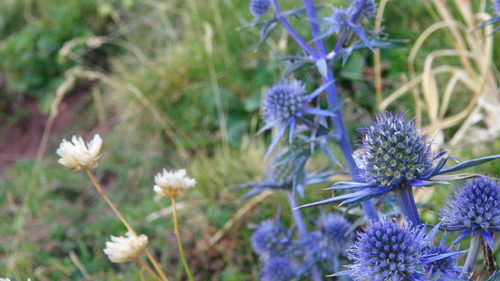
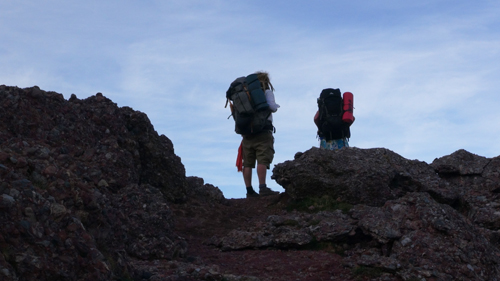
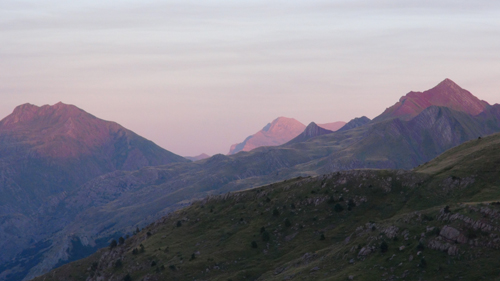
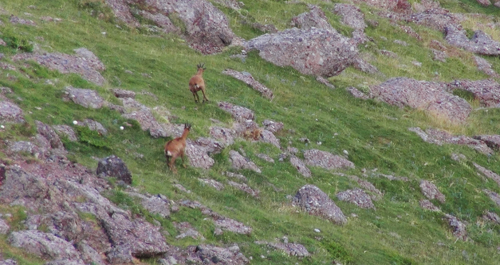
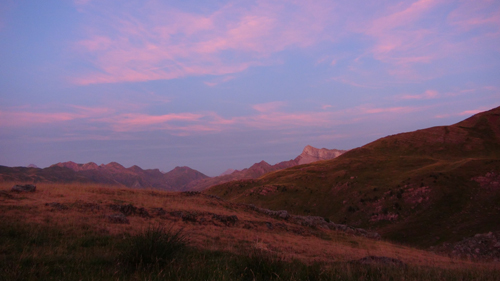

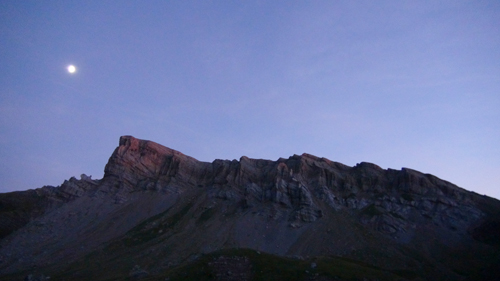
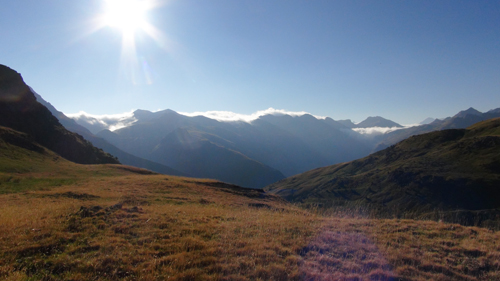
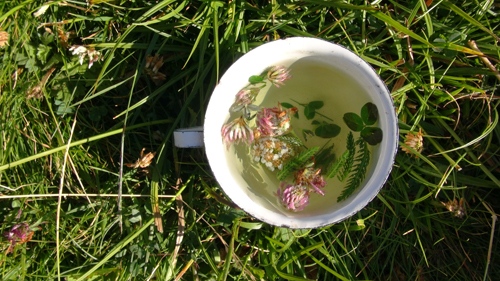
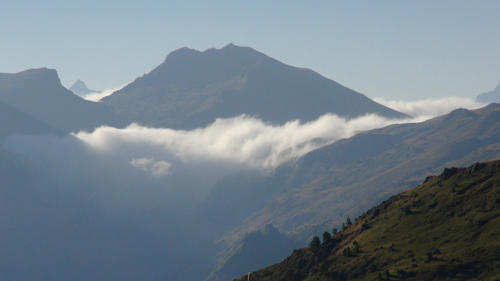
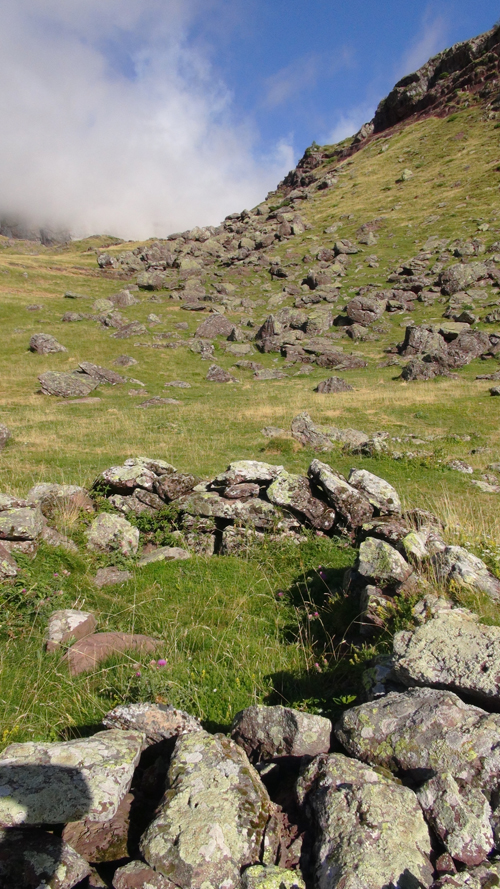
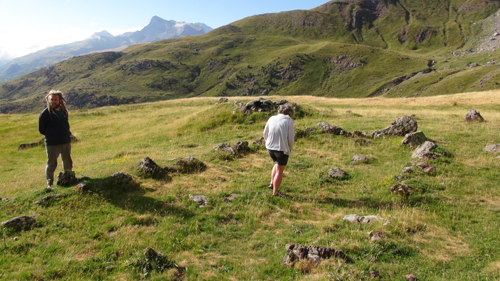
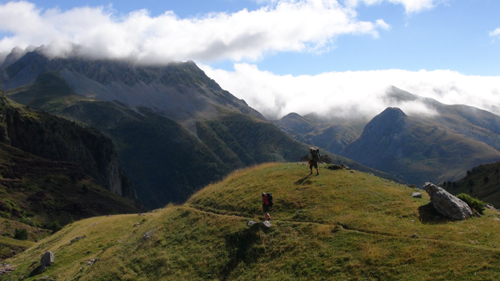
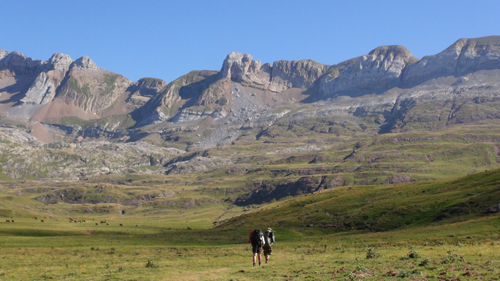
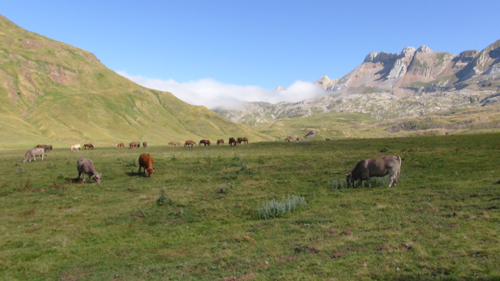
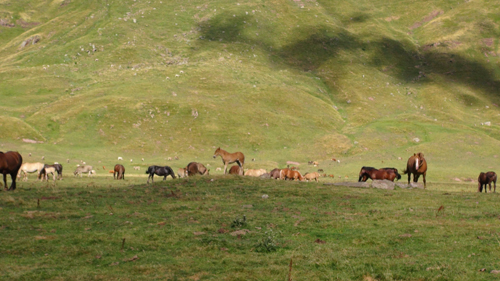

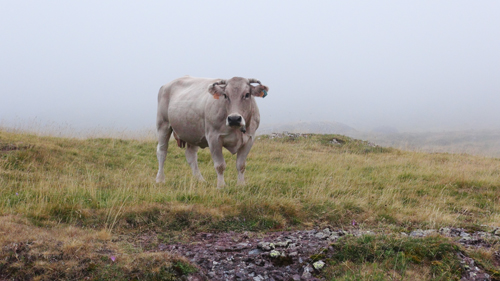
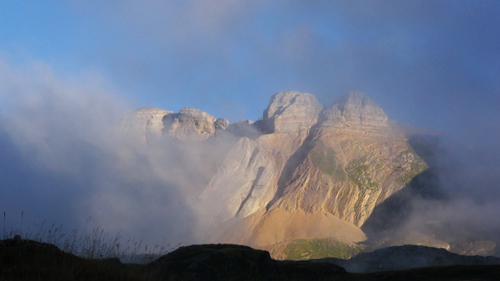
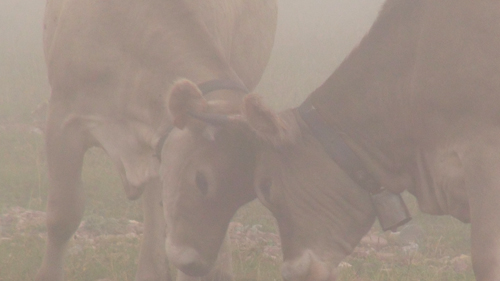
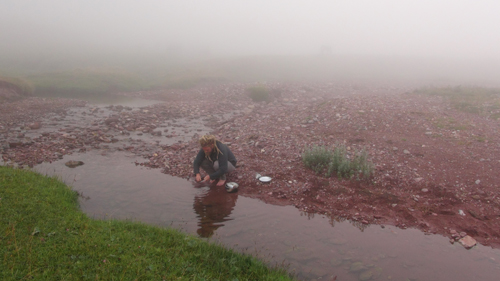
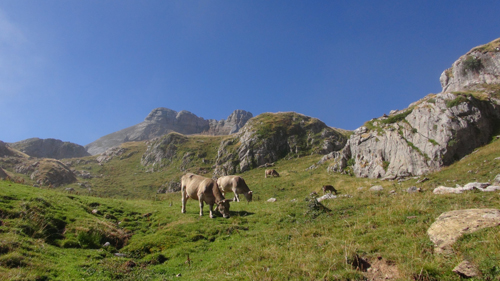

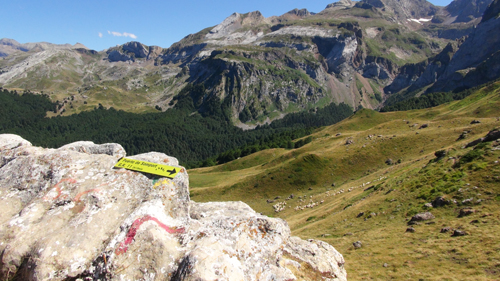
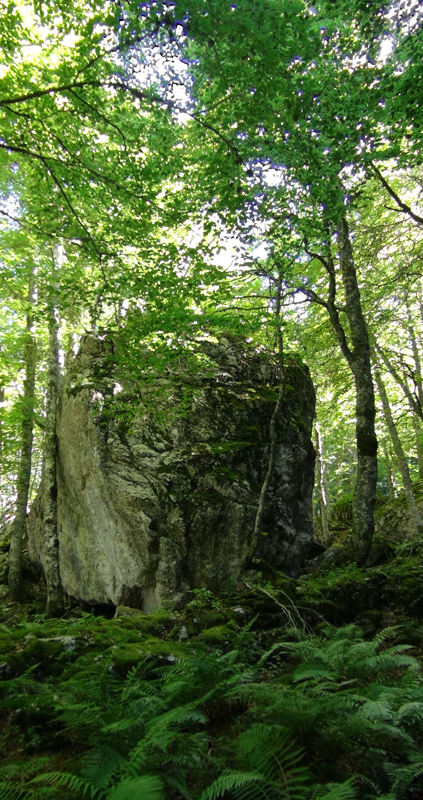
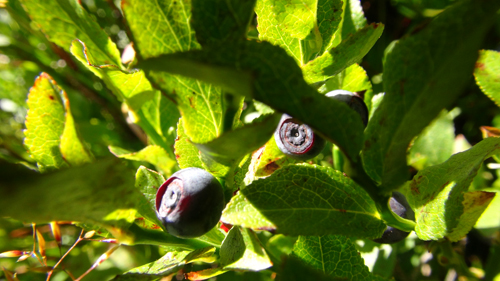
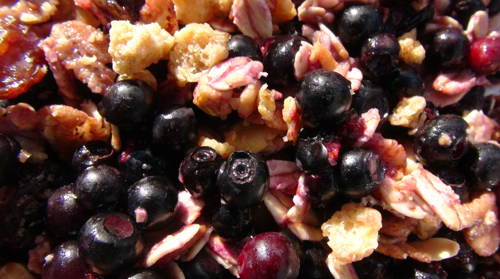
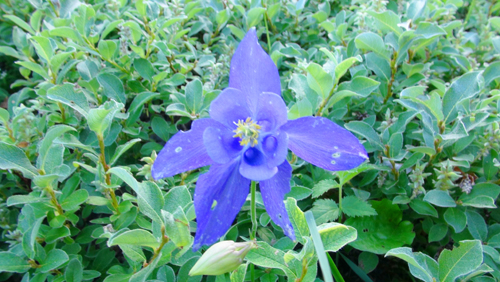
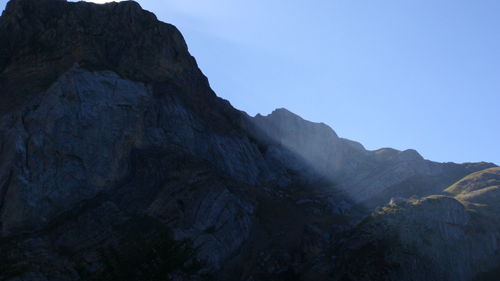
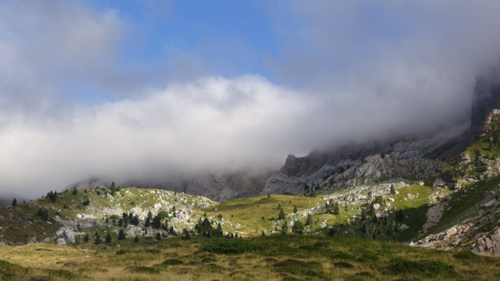
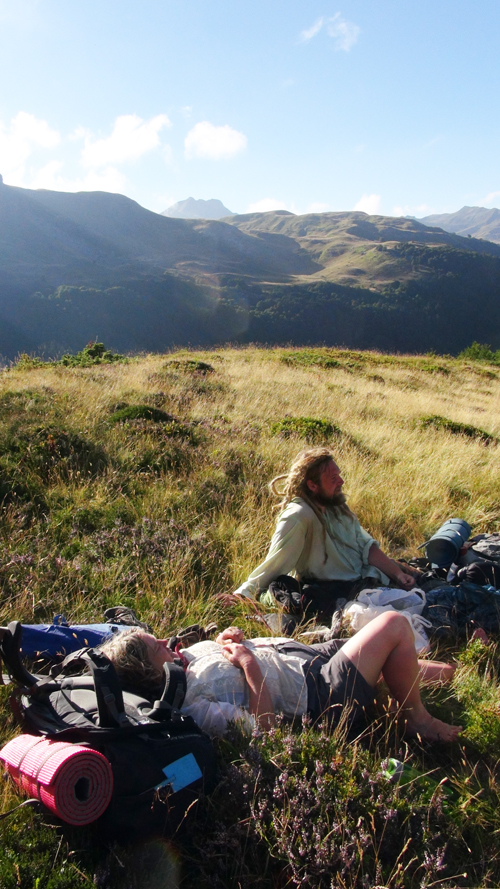
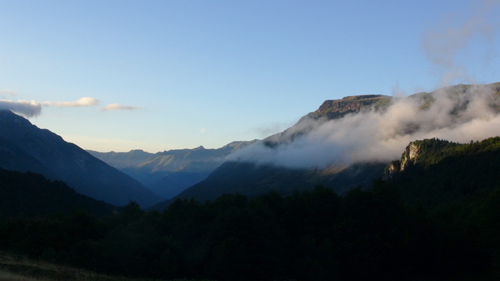
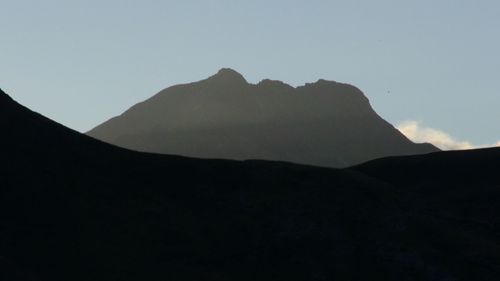
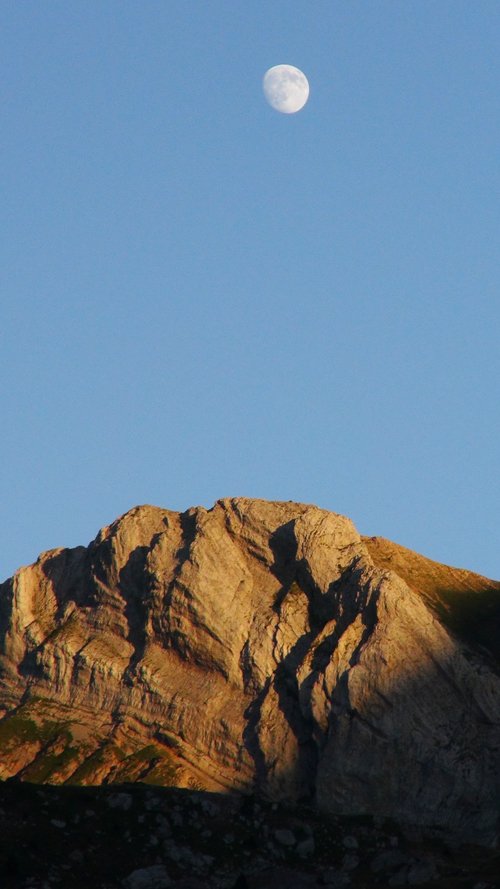

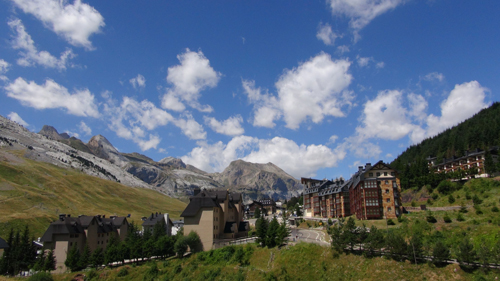
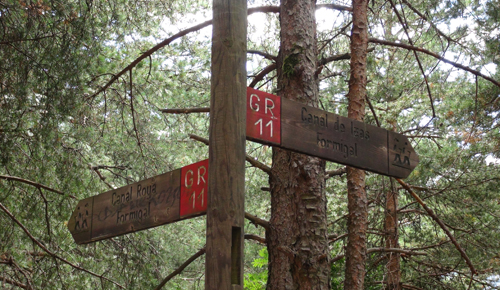
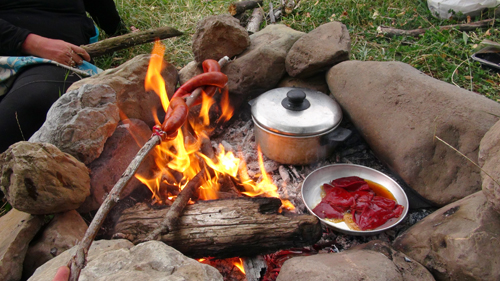

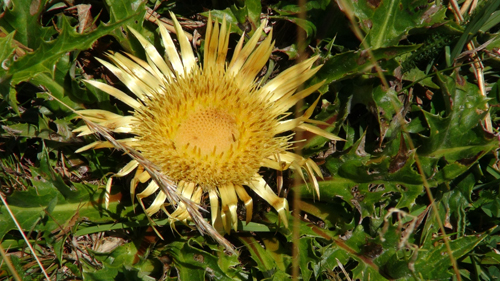
 An ear of wheat, ripe and ready for harvest.
An ear of wheat, ripe and ready for harvest.

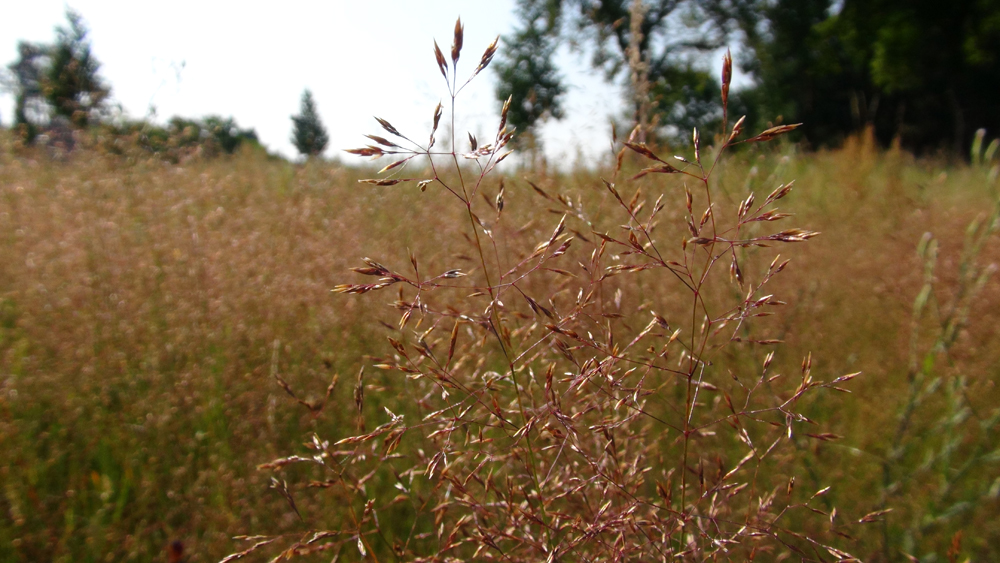



 The common toad, with dry cool skin hops across the forest path.
The common toad, with dry cool skin hops across the forest path.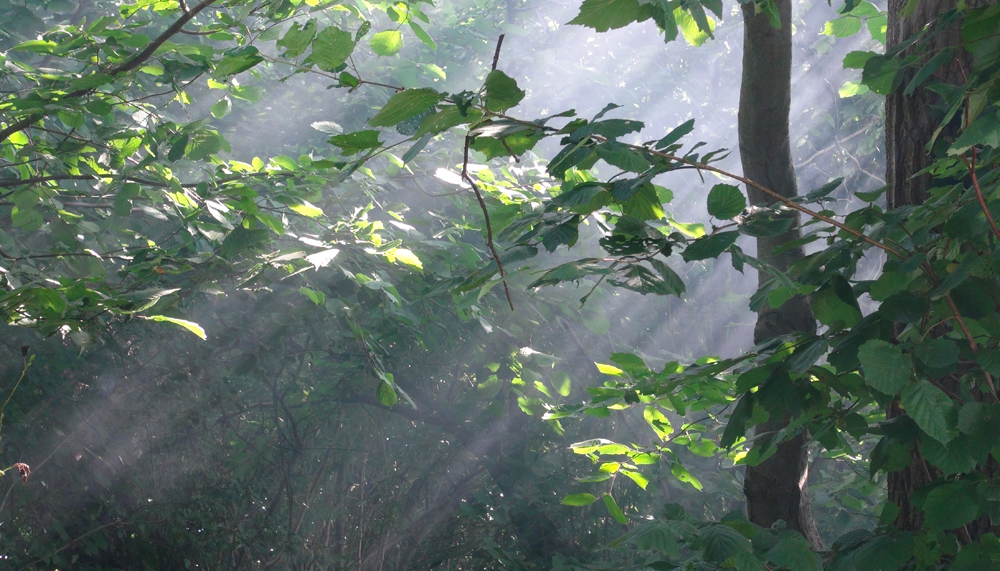 Shafts of light illuminate the smoke from our camp fire as it wafts through the under story of young beech trees.
Shafts of light illuminate the smoke from our camp fire as it wafts through the under story of young beech trees.